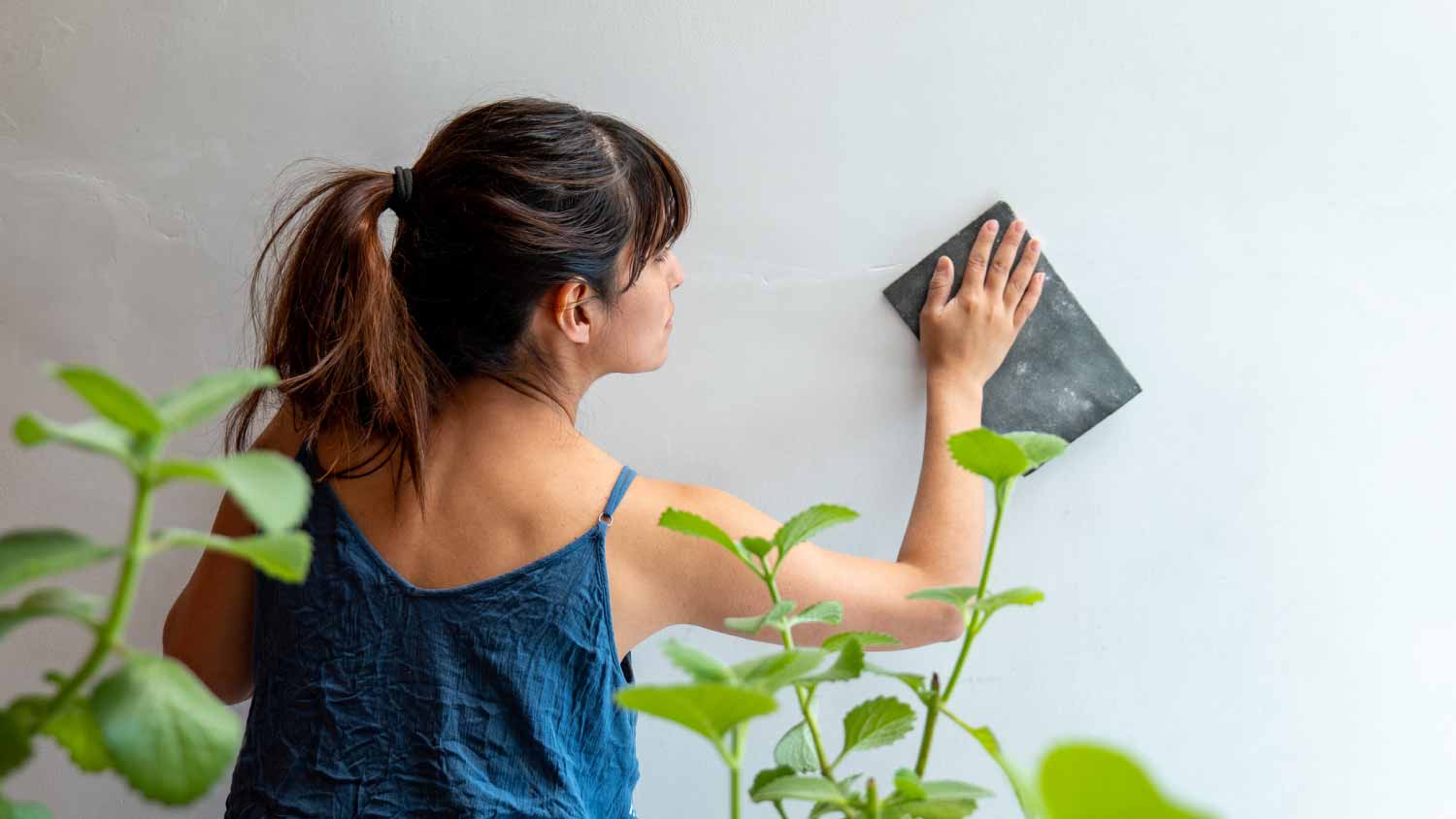
The cost to paint the interior of a house in Tampa, FL depends on size, layout, type of surface, and more. Learn what factors can influence your total in this guide.
It's like an exfoliating spa treatment for your walls


You can remove texture by sanding using proper techniques.
Results can vary by wall, paint, and texture types and materials.
Sanding the texture off a wall requires time and patience.
Skim-coating walls with texture costs between $300 and $1,200.
Thinking of updating your space and wondering, can you sand texture on a painted wall? You're not alone. This common facelift technique can modernize and transform any room. However, there are a few things to know before sanding your textured wall.
There are a couple of reasons to consider sanding the texture on a wall with paint on it. The primary reason is to remove the texture. However, completely removing any trace of texture by sanding alone is difficult. A light skim coat after sanding is often necessary to achieve perfectly smooth results.
Another reason to sand a textured wall is to downplay the amount of texture or reduce its appearance. This is a common way to lessen the textured effect while still leaving the room with a cozy feel.
For whatever reason you choose, it's essential to know that the sanding part is just the first step. You'll still need to paint the textured wall if you simply knock down some of the effect. If you wish to have the wall completely smooth, you'll also have to skim coat and prime before painting for the best results.

If you wish to completely remove the texture from a wall, you have a couple of options. However, your choices are more limited when the wall already has paint on it. Regardless of how smooth you want the final result, starting with a relatively heavy-grit sandpaper or sanding sponge, between 60 and 80, is a good first step. Using an orbital sander will reduce fatigue. However, be careful not to sand too deeply if you choose this tool.
If your goal is to simply reduce the texture, follow the initial step by resanding the surface with a lighter-grit sandpaper of between 100 and 120. Be sure to wear a dust mask or respirator and eye protection whenever you sand a wall. Follow up your sanding steps by wiping the dust off the wall with rags and cleaning up with a vacuum or dust extractor.
You'll need just a few tools and supplies for the initial sanding process. You'll need more stuff when you start the skim-coating and repainting steps.
Sandpaper, sanding sponge, or orbital sander with paper
A putty knife for reaching tight spaces or stubborn spots
Mask or respirator
Step ladder
Rags
Vacuum cleaner, dust extractor, or shop vac
Consider these factors before choosing to sand the texture off of your painted walls.
The job is tedious and can be frustrating.
There are no guarantees of perfect results.
Reaching a high-level drywall finish will take extensive work.
Most homeowners choose to hire a local painting pro for this work.
Pros typically charge between $300 and $1,200 to sand texture a painted wall.
Additionally, if you live in a home built before 1978, there's a real possibility that lead paint still exists on the walls. Sanding the material and exposing yourself to the dust is hazardous to your health. Reconsider the task if this is the case, or have a professional safely perform the work.
After sanding, your wall will still require plenty of work to make it presentable. Start by thoroughly dust cleaning it.
Whether you're simply knocking down the texture or reaching for perfect smoothness, if your sanding reaches the drywall or plaster below the paint surface, begin the repainting process with a primer coat.
From there, you can use any wall painting technique that will help you achieve the appearance you want.
From average costs to expert advice, get all the answers you need to get your job done.

The cost to paint the interior of a house in Tampa, FL depends on size, layout, type of surface, and more. Learn what factors can influence your total in this guide.

The cost to paint the interior of a house in Indianapolis, IN depends on size, layout, type of surface, and more. Learn what factors can influence your total in this guide.

The cost to paint the interior of a house in Orlando, FL depends on size, layout, type of surface, and more. Learn what factors can influence your total in this guide.

These creative paint techniques can help you create a show-stopping aesthetic with a few supplies and a free afternoon. Try these wall painting techniques today.

Sick of staring at popcorn walls or faux stucco? This guide will show you how to remove texture from walls like a pro. Here’s what you need to know.

From stone, tile, wallpaper, or paint, discover different accent wall ideas for your space.